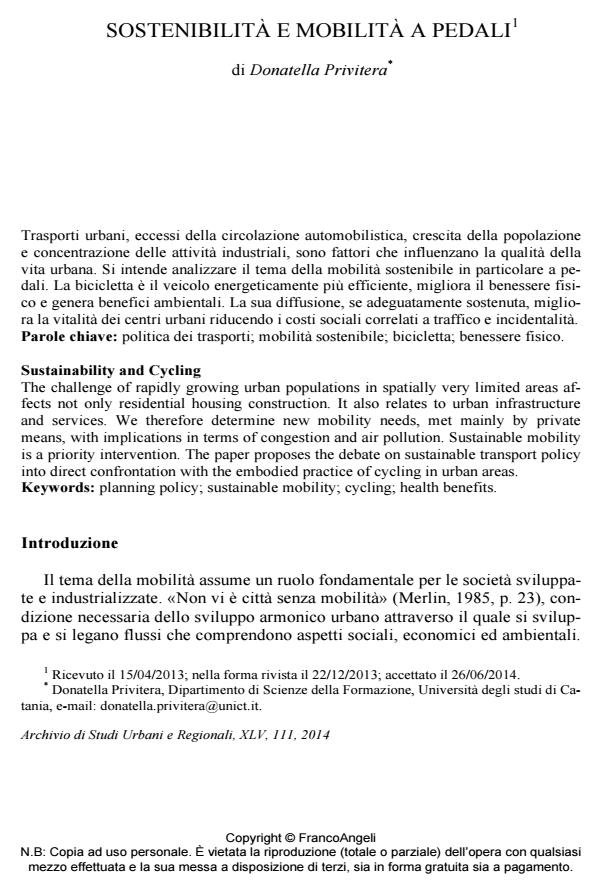Sustainability and Cycling
Journal title ARCHIVIO DI STUDI URBANI E REGIONALI
Author/s Donatella Stefania Privitera
Publishing Year 2015 Issue 2014/111
Language Italian Pages 20 P. 108-127 File size 112 KB
DOI 10.3280/ASUR2014-111005
DOI is like a bar code for intellectual property: to have more infomation
click here
Below, you can see the article first page
If you want to buy this article in PDF format, you can do it, following the instructions to buy download credits

FrancoAngeli is member of Publishers International Linking Association, Inc (PILA), a not-for-profit association which run the CrossRef service enabling links to and from online scholarly content.
The challenge of rapidly growing urban populations in spatially very limited areas affects not only residential housing construction. It also relates to urban infrastructure and services. We therefore determine new mobility needs, met mainly by private means, with implications in terms of congestion and air pollution. Sustainable mobility is a priority intervention. The paper proposes the debate on sustainable transport policy into direct confrontation with the embodied practice of cycling in urban areas.
Keywords: Planning policy; sustainable mobility; cycling; health benefits.
- A ride on the wild side. Il ruolo della natura nei paesaggi della ciclabilità Margherita Cisani, in RIVISTA GEOGRAFICA ITALIANA 2/2021 pp.119
DOI: 10.3280/rgioa2-2021oa12036
Donatella Stefania Privitera, Sostenibilità e mobilità a pedali in "ARCHIVIO DI STUDI URBANI E REGIONALI" 111/2014, pp 108-127, DOI: 10.3280/ASUR2014-111005